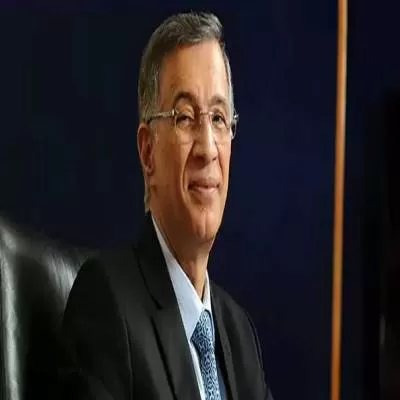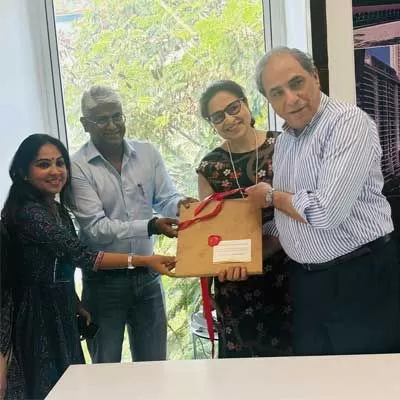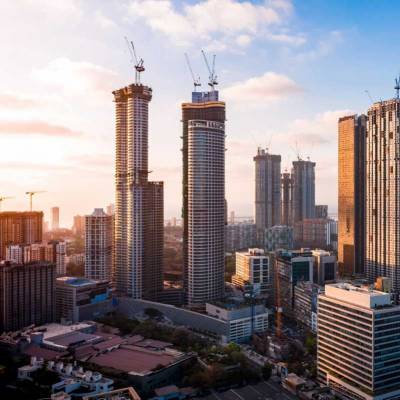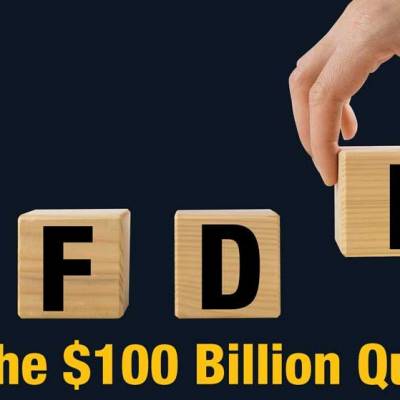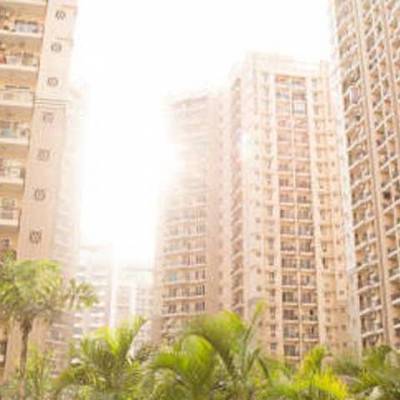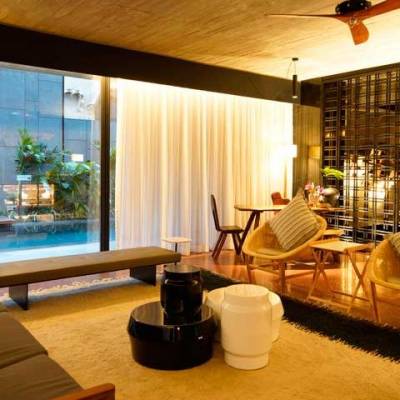- Home
- Real Estate
- Make it Mega

Make it Mega
According to the Maharashtra Region and Town Planning Act, every municipal corporation must prepare a development plan (DP) to be implemented over 20 years. The last time a DP was prepared for Mumbai was way back in 1981 and it was adopted 13 years later in 1994. So, a new DP, which would be valid for 20 years, needed to be prepared and ratified by 2014, to be in force till 2034.
The existing DP for Mumbai defines land reservations: That is, land that is set aside for a specific public purpose, amenities, transportation networks and services through a coloured land-use map of the entire city. When we consider the draft DP, which was placed on a public platform for comments and suggestions, what comes through clearly is that it is, at best, a tweaking of the old plan with very little to write home about.
Plan panned
The Mumbai Development Plan 2034, an urban planning blueprint released on February 16, was strongly opposed by citizens, including politicians and actors. Its critics said the plan left out hundreds of iconic structures from the list of heritage buildings and ignored ground realities of the city.
When we talk about development plans for a megalopolis like Mumbai, especially given its status as a global finance centre and India´s commercial capital, it has to have the ´big bang´ aspect - it must come up with path-breaking new initiatives, plug gaps that the city has been suffering from for long, and create something new that is ´iconic´.
People´s participation happened through large outpourings on social media. The architects, town planners and activists who panned the draft described the plan as ´irrelevant to the needs and aspirations of Mumbai´s residents´. The proposed increase in the floor space index, which would allow taller buildings in some parts of the city and suburbs, was also panned on social media. For its part, the Brihanmumbai Municipal Corporation said the draft was made professionally, to achieve the goals of ´growth, inclusiveness and sustainability´.
Forward path
The question we need to answer, as stakeholders in Mumbai´s future, is: How do we ensure that the new DP achieves the goals of ´growth, inclusiveness and sustainability´? When Maharashtra Chief Minister Devendra Fadnavis asked for the draft DP to be revised, many thought it was just a kneejerk reaction. With the state cabinet granting an extension to the process of redrafting the draft DP by another six months in August this year, it would appear that the ramifications of what needs to be done have been understood; and the required timeframe granted.
The state government has recognised that there were too many mistakes in the draft DP and that it not only needed to be reconsidered but actually redone. One has to remember that the DP is for 20 long years. It is not only about FSI that can be increased or fungible FSI or TDR, but the fact that Mumbai requires a good plan with vision and planned infrastructure, which has not happened. The DP needs to be clear about how and for what purpose it plans to use the FSI; also, its cost is an important aspect. Let me illustrate with an example: The pricing of FSI has been so flawed that no one can buy a flat costing Rs 10,000 per sq ft in the last suburbs of Mumbai, whether it is Borivali-Dahisar or Bhandup-Mulund. I hope the new DP will find ways to sort this out; housing shortage is a crisis that needs to be solved at the earliest.
Maximum city
Every city in the world has some great things. When we were under the British, Mumbai got its railways, airport, port, iconic structures like the Bombay High Court, the Gateway of India and so many beautiful buildings in South Bombay that are now heritage. What is our vision for Mumbai, and will it be reflected in the draft DP? I hope the draft has a vision for Mumbai - greater and better - that takes cognisance of the need for affordable housing.
Sometimes, we miss the wood for the trees. My perspective is: Why does this have to be a just a ´plan´, with number-crunching and data sorting being the primary goals? Why should it not be a ´vision document´ with a holistic perspective, laying the foundation for a better life for Mumbai´s citizens?
While on one hand, Mumbai needs to grow vertically, growth also needs to be supported by infrastructure development to make it sustainable. I hope the new DP will be positive for both aspects: First, basic necessities for a future-ready Mumbai need to be provided; second, having done that, the DP needs to go beyond the basics, from ´basic living standards´ to ´enhanced lifestyles´. If Mumbai has to become a global finance centre, I expect the ´vision document´ to be ´future ready´ and in sync with Mumbai´s residents - it should have the farsightedness to spot and plan for changing trends. The ´vision document´ must be propelled by the drive to meet expectations and enhance living standards of citizens, to positively change the skyline of the city.
I hope the recall and subsequent overhaul of the DP will ensure a more systematic approach towards making Mumbai a world-class financial hub. If the plan is being made for the next 20 years, it requires far more attention to detail and ground realities than just the arithmetic of the plan. As I see it, this is probably the last DP for Mumbai I may see in my lifetime, and I hope it is something that befits this great megalopolis.
About the Author: Niranjan Hiranandani, Managing Director, Hiranandani Communities, is a business leader with the desire to rewrite India´s real estate story. A qualified Chartered Accountant, he is arguably India´s ´builder extraordinaire´, the person credited with changing Mumbai´s skyline. The phrase ´labore et constantia´ (with consistent efforts, one can scale great heights) sums up his success story.
NIRANJAN HIRANANDANI argues that the new development plan for Mumbai should be a vision document with a holistic view. According to the Maharashtra Region and Town Planning Act, every municipal corporation must prepare a development plan (DP) to be implemented over 20 years. The last time a DP was prepared for Mumbai was way back in 1981 and it was adopted 13 years later in 1994. So, a new DP, which would be valid for 20 years, needed to be prepared and ratified by 2014, to be in force till 2034. The existing DP for Mumbai defines land reservations: That is, land that is set aside for a specific public purpose, amenities, transportation networks and services through a coloured land-use map of the entire city. When we consider the draft DP, which was placed on a public platform for comments and suggestions, what comes through clearly is that it is, at best, a tweaking of the old plan with very little to write home about. Plan panned The Mumbai Development Plan 2034, an urban planning blueprint released on February 16, was strongly opposed by citizens, including politicians and actors. Its critics said the plan left out hundreds of iconic structures from the list of heritage buildings and ignored ground realities of the city. When we talk about development plans for a megalopolis like Mumbai, especially given its status as a global finance centre and India´s commercial capital, it has to have the ´big bang´ aspect - it must come up with path-breaking new initiatives, plug gaps that the city has been suffering from for long, and create something new that is ´iconic´. People´s participation happened through large outpourings on social media. The architects, town planners and activists who panned the draft described the plan as ´irrelevant to the needs and aspirations of Mumbai´s residents´. The proposed increase in the floor space index, which would allow taller buildings in some parts of the city and suburbs, was also panned on social media. For its part, the Brihanmumbai Municipal Corporation said the draft was made professionally, to achieve the goals of ´growth, inclusiveness and sustainability´. Forward path The question we need to answer, as stakeholders in Mumbai´s future, is: How do we ensure that the new DP achieves the goals of ´growth, inclusiveness and sustainability´? When Maharashtra Chief Minister Devendra Fadnavis asked for the draft DP to be revised, many thought it was just a kneejerk reaction. With the state cabinet granting an extension to the process of redrafting the draft DP by another six months in August this year, it would appear that the ramifications of what needs to be done have been understood; and the required timeframe granted. The state government has recognised that there were too many mistakes in the draft DP and that it not only needed to be reconsidered but actually redone. One has to remember that the DP is for 20 long years. It is not only about FSI that can be increased or fungible FSI or TDR, but the fact that Mumbai requires a good plan with vision and planned infrastructure, which has not happened. The DP needs to be clear about how and for what purpose it plans to use the FSI; also, its cost is an important aspect. Let me illustrate with an example: The pricing of FSI has been so flawed that no one can buy a flat costing Rs 10,000 per sq ft in the last suburbs of Mumbai, whether it is Borivali-Dahisar or Bhandup-Mulund. I hope the new DP will find ways to sort this out; housing shortage is a crisis that needs to be solved at the earliest. Maximum city Every city in the world has some great things. When we were under the British, Mumbai got its railways, airport, port, iconic structures like the Bombay High Court, the Gateway of India and so many beautiful buildings in South Bombay that are now heritage. What is our vision for Mumbai, and will it be reflected in the draft DP? I hope the draft has a vision for Mumbai - greater and better - that takes cognisance of the need for affordable housing. Sometimes, we miss the wood for the trees. My perspective is: Why does this have to be a just a ´plan´, with number-crunching and data sorting being the primary goals? Why should it not be a ´vision document´ with a holistic perspective, laying the foundation for a better life for Mumbai´s citizens? While on one hand, Mumbai needs to grow vertically, growth also needs to be supported by infrastructure development to make it sustainable. I hope the new DP will be positive for both aspects: First, basic necessities for a future-ready Mumbai need to be provided; second, having done that, the DP needs to go beyond the basics, from ´basic living standards´ to ´enhanced lifestyles´. If Mumbai has to become a global finance centre, I expect the ´vision document´ to be ´future ready´ and in sync with Mumbai´s residents - it should have the farsightedness to spot and plan for changing trends. The ´vision document´ must be propelled by the drive to meet expectations and enhance living standards of citizens, to positively change the skyline of the city. I hope the recall and subsequent overhaul of the DP will ensure a more systematic approach towards making Mumbai a world-class financial hub. If the plan is being made for the next 20 years, it requires far more attention to detail and ground realities than just the arithmetic of the plan. As I see it, this is probably the last DP for Mumbai I may see in my lifetime, and I hope it is something that befits this great megalopolis. About the Author: Niranjan Hiranandani, Managing Director, Hiranandani Communities, is a business leader with the desire to rewrite India´s real estate story. A qualified Chartered Accountant, he is arguably India´s ´builder extraordinaire´, the person credited with changing Mumbai´s skyline. The phrase ´labore et constantia´ (with consistent efforts, one can scale great heights) sums up his success story.


